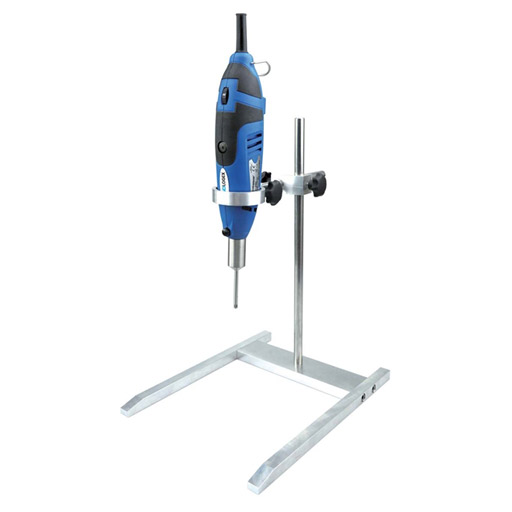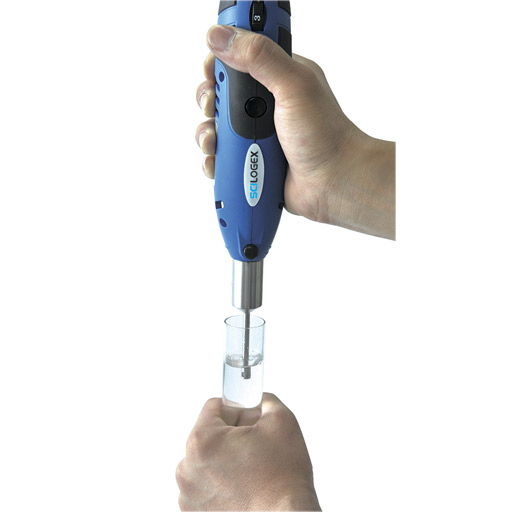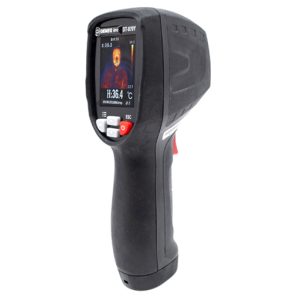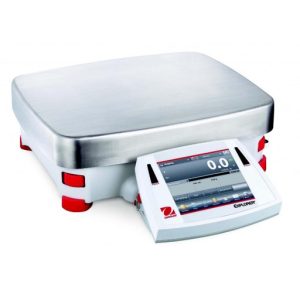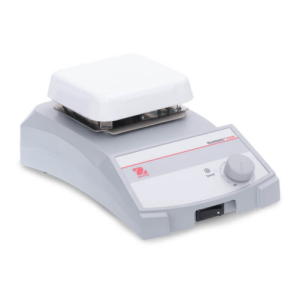The Handheld Homogenizer D160 can rapidly homogenize, disperse, and emulsify samples from 0.1-250ml solids or liquid media depending on the generating probe.
The Handheld homogenizer D160 is ideal for:
- Ideal for mixing, emulsification, shredding, or chopping
- Practical answer for small samples
- Easy to hold and lightweight for one-hand operation
- Generators are made of 316L Stainless Steel with PTFE bushings
- Autoclavable stainless steel shafts are inert to aggressive solutions
- All shafts are interchangeable and are easily removed for cleanup
- High-speed motor with speed control from 8,000 to 30,000 rpm
- Suitable for solvents & abrasive substances
Handheld Homogenizer D160 – Specifications
| Speed range | : | 8,000-30,000rpm |
| Sample volume range | : | Solid/Liquid media volumes 1 – 250ml, tissue volumes 1 – 1000ml |
| Speed control | : | 6 position control dial |
| Motor type | : | Universal motor, 130 Watt |
| pH range | : | 2-13 |
| Fineness | : | Suspensions & Emulsion 10-15 & 1-10um |
| Noise emission | : | 54 dB(A) at 30,000 rpm |
| Dimensions | : | 2.5L x 2.5W x 8H inches (drive only) |
| Weight | : | 18lbs (with stand) 1.5lbs (drive only) |
| Voltage | : | 110Volts, 60Hz |
During operation, the suspended material is drawn into the core of the homogenizer by a rotor turning at up to 30,000rpm.
The material is repeatedly cycled through narrow slits in the probe where it is rapidly sheared and disintegrated by high shear. Complete homogenization of tissues (muscle, liver, breast tissue, etc.) is usually achieved in a few seconds.
Perfect for processing of lysis animal cells. Little, if any, heat is produced during the process.
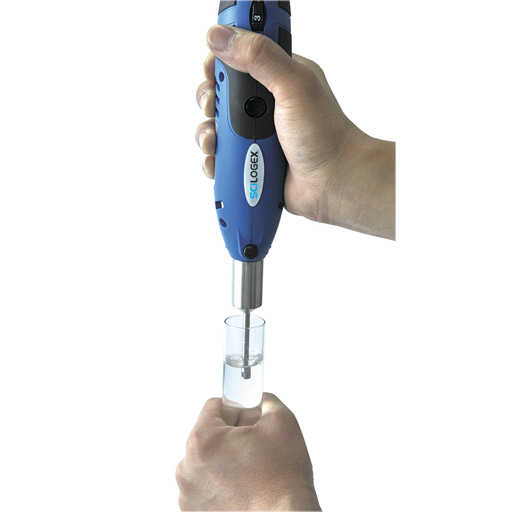
Handheld Homogenizer D160 – How to use
Cleaning
1- Immediately after finishing work with the apparatus, the dispersing element must be cleaned so that substance residues do not stick to the threads.
2- Small bacterial cultures can form in the small grooves, and this will create difficulties. For this reason, and to clean the dispersing tool effectively, it should be run in a solvent that dissolves the residue, but does not harm the Teflon bearing and the steel.
3- For proper cleaning, the dispersing element must be disassembled.
4- Proper care and cleaning of the equipment will ensure a longer and better use of the equipment.
Learn more in the Instruction Manual / Quick Start Guide
The Handheld Homogenizer D160 can rapidly homogenize, disperse, and emulsify samples from 0.1-250ml solids or liquid media depending on the generating probe.
The Handheld homogenizer D160 is ideal for:
- Ideal for mixing, emulsification, shredding, or chopping
- Practical answer for small samples
- Easy to hold and lightweight for one-hand operation
- Generators are made of 316L Stainless Steel with PTFE bushings
- Autoclavable stainless steel shafts are inert to aggressive solutions
- All shafts are interchangeable and are easily removed for cleanup
- High-speed motor with speed control from 8,000 to 30,000 rpm
- Suitable for solvents & abrasive substances
Handheld Homogenizer D160 – Specifications
| Speed range | : | 8,000-30,000rpm |
| Sample volume range | : | Solid/Liquid media volumes 1 – 250ml, tissue volumes 1 – 1000ml |
| Speed control | : | 6 position control dial |
| Motor type | : | Universal motor, 130 Watt |
| pH range | : | 2-13 |
| Fineness | : | Suspensions & Emulsion 10-15 & 1-10um |
| Noise emission | : | 54 dB(A) at 30,000 rpm |
| Dimensions | : | 2.5L x 2.5W x 8H inches (drive only) |
| Weight | : | 18lbs (with stand) 1.5lbs (drive only) |
| Voltage | : | 110Volts, 60Hz |
During operation, the suspended material is drawn into the core of the homogenizer by a rotor turning at up to 30,000rpm.
The material is repeatedly cycled through narrow slits in the probe where it is rapidly sheared and disintegrated by high shear. Complete homogenization of tissues (muscle, liver, breast tissue, etc.) is usually achieved in a few seconds.
Perfect for processing of lysis animal cells. Little, if any, heat is produced during the process.

Handheld Homogenizer D160 – How to use
Cleaning
1- Immediately after finishing work with the apparatus, the dispersing element must be cleaned so that substance residues do not stick to the threads.
2- Small bacterial cultures can form in the small grooves, and this will create difficulties. For this reason, and to clean the dispersing tool effectively, it should be run in a solvent that dissolves the residue, but does not harm the Teflon bearing and the steel.
3- For proper cleaning, the dispersing element must be disassembled.
4- Proper care and cleaning of the equipment will ensure a longer and better use of the equipment.
Learn more in the Instruction Manual / Quick Start Guide






